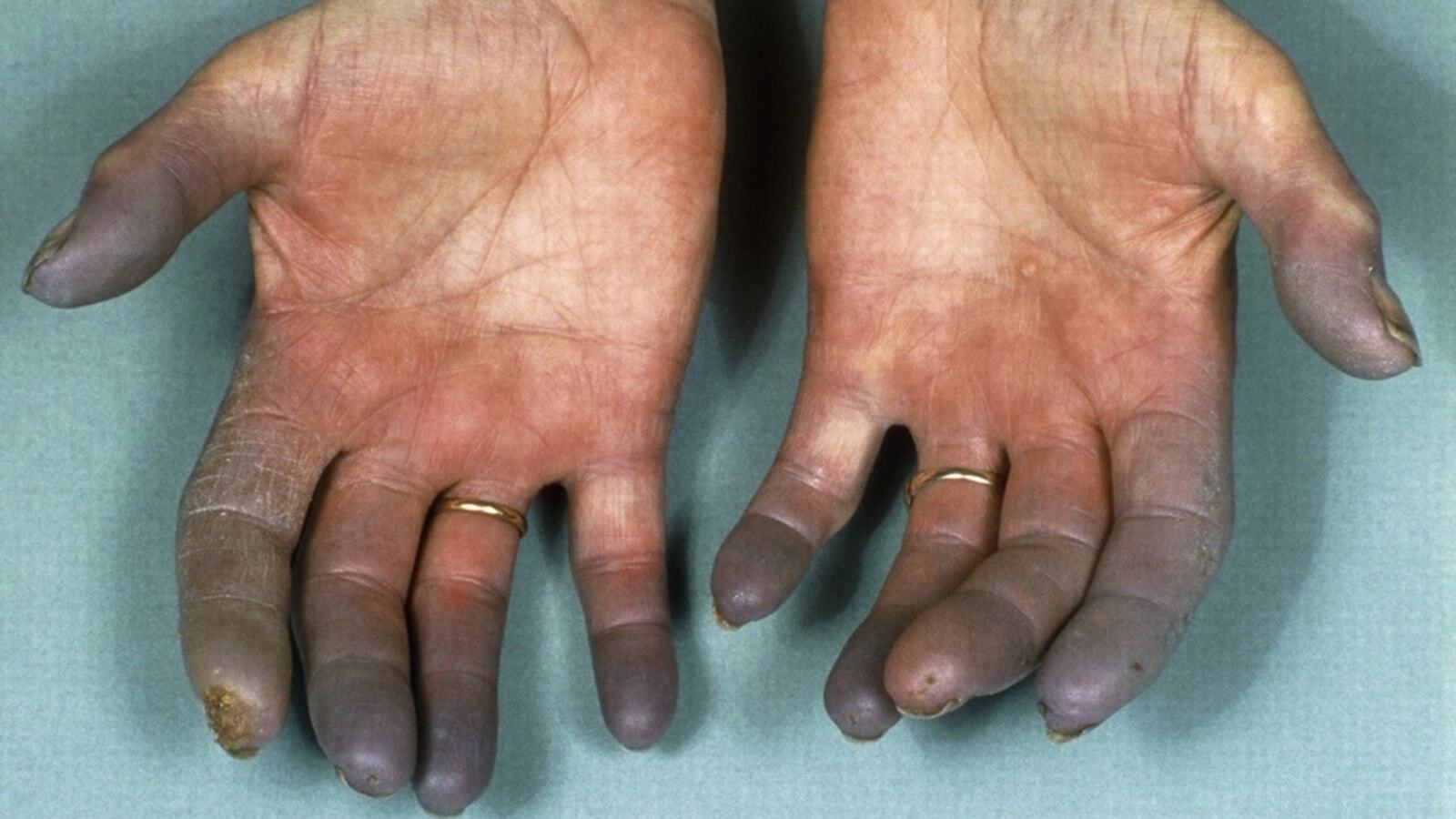
Buerger's Disease, also known as thromboangiitis obliterans, is a rare condition that affects blood vessels in the arms and legs. Characterized by inflammation and clotting in small and medium-sized arteries and veins, it can lead to severe pain, tissue damage, and even gangrene. This disease primarily affects young men who smoke or use tobacco products. Symptoms often include pain in the limbs, skin ulcers, and changes in skin color. Early diagnosis and treatment are crucial to prevent serious complications. Quitting smoking is the most effective way to halt the progression of Buerger's Disease. Understanding this condition can help those affected manage their symptoms and improve their quality of life.
Key Takeaways:
- Buerger's Disease primarily affects young men who smoke heavily, causing severe pain and potential amputation. Quitting smoking is crucial for halting its progression and preventing complications.
- Early diagnosis and complete cessation of tobacco use are essential for managing Buerger's Disease. Lifestyle adjustments, regular check-ups, and support from healthcare providers and loved ones can improve quality of life.
What is Buerger's Disease?
Buerger's Disease, also known as thromboangiitis obliterans, is a rare condition affecting blood vessels in the arms and legs. This disease can lead to severe pain, tissue damage, and even amputation if not managed properly. Here are some intriguing facts about Buerger's Disease.
- Buerger's Disease primarily affects small and medium-sized arteries and veins in the arms and legs.
- The disease is named after Dr. Leo Buerger, who first described it in 1908.
- It is most common in men aged 20 to 40 who smoke heavily.
- Women can also develop Buerger's Disease, though it is less common.
- The exact cause of Buerger's Disease remains unknown, but smoking is a significant risk factor.
- Symptoms often include pain in the hands and feet, especially during exercise.
- Cold temperatures can worsen symptoms, causing increased pain and discomfort.
- Buerger's Disease can lead to open sores on the fingers and toes.
- In severe cases, the disease can cause gangrene, leading to the need for amputation.
- Quitting smoking is the most effective way to halt the progression of Buerger's Disease.
Symptoms and Diagnosis
Understanding the symptoms and how Buerger's Disease is diagnosed can help in early detection and management. Here are some key points to consider.
- Early symptoms include claudication, which is pain caused by too little blood flow during exercise.
- Rest pain, or pain at rest, is a more advanced symptom indicating severe blood flow restriction.
- Color changes in the skin of the affected areas can occur, turning pale, red, or bluish.
- The disease can cause Raynaud's phenomenon, where fingers and toes turn white or blue in response to cold or stress.
- Diagnosis often involves ruling out other conditions with similar symptoms, such as atherosclerosis.
- Angiography, an imaging test, can help visualize blood flow and identify blockages.
- Blood tests may be conducted to exclude other diseases.
- A biopsy of the affected tissue can sometimes be used to confirm the diagnosis.
- Doppler ultrasound is another imaging technique used to assess blood flow in the affected areas.
- Early diagnosis is crucial for preventing severe complications.
Treatment and Management
Managing Buerger's Disease involves lifestyle changes and medical interventions to improve blood flow and reduce symptoms. Here are some treatment options.
- The most critical step in treatment is complete cessation of tobacco use.
- Medications to improve blood flow, such as vasodilators, may be prescribed.
- Pain management is essential, often involving analgesics or anti-inflammatory drugs.
- Physical therapy can help improve circulation and reduce symptoms.
- In some cases, surgical procedures like sympathectomy may be considered to improve blood flow.
- Hyperbaric oxygen therapy has been used to promote healing of ulcers and sores.
- Anticoagulants, or blood thinners, may be prescribed to prevent blood clots.
- Patients are advised to keep the affected limbs warm to prevent worsening of symptoms.
- Regular exercise, within tolerance, can help improve overall circulation.
- Avoiding cold exposure is crucial for managing symptoms.
Risk Factors and Prevention
Identifying risk factors and taking preventive measures can help reduce the likelihood of developing Buerger's Disease. Here are some important points.
- Smoking is the most significant risk factor for Buerger's Disease.
- Genetic predisposition may play a role, though it is not well understood.
- Men are more likely to develop the disease than women.
- The disease is more common in people of Asian and Middle Eastern descent.
- Secondhand smoke exposure can also increase the risk.
- Maintaining good cardiovascular health can help reduce the risk.
- Regular check-ups with a healthcare provider can aid in early detection.
- Educating young people about the dangers of smoking can help prevent the disease.
- Stress management techniques can help reduce the risk of symptoms.
- A healthy diet rich in fruits, vegetables, and whole grains supports overall vascular health.
Living with Buerger's Disease
Living with Buerger's Disease requires ongoing management and lifestyle adjustments. Here are some tips for coping with the condition.
- Support groups can provide emotional support and practical advice.
- Regular follow-ups with a healthcare provider are essential for monitoring the disease.
- Patients should avoid activities that can injure the affected limbs.
- Wearing comfortable, well-fitting shoes can help prevent foot injuries.
- Keeping the skin moisturized can prevent cracks and sores.
- Patients should avoid tight clothing that can restrict blood flow.
- Stress reduction techniques, such as meditation or yoga, can help manage symptoms.
- Staying informed about the disease can empower patients to take control of their health.
- Family and friends can play a crucial role in providing support and encouragement.
- Adopting a positive mindset and focusing on what can be controlled can improve quality of life.
Final Thoughts on Buerger's Disease
Buerger's Disease, also known as thromboangiitis obliterans, is a rare condition that primarily affects smokers. It causes blood vessels to swell, which can lead to blockages and, in severe cases, tissue damage or even amputation. Quitting smoking is the most effective way to manage and prevent further complications. Early diagnosis and treatment are crucial for improving quality of life. While there's no cure, medications and lifestyle changes can help manage symptoms. If you or someone you know shows signs of Buerger's Disease, consult a healthcare professional immediately. Understanding the risks and taking proactive steps can make a significant difference. Stay informed, stay healthy, and take care of your vascular health.
Frequently Asked Questions
Was this page helpful?
Our commitment to delivering trustworthy and engaging content is at the heart of what we do. Each fact on our site is contributed by real users like you, bringing a wealth of diverse insights and information. To ensure the highest standards of accuracy and reliability, our dedicated editors meticulously review each submission. This process guarantees that the facts we share are not only fascinating but also credible. Trust in our commitment to quality and authenticity as you explore and learn with us.


